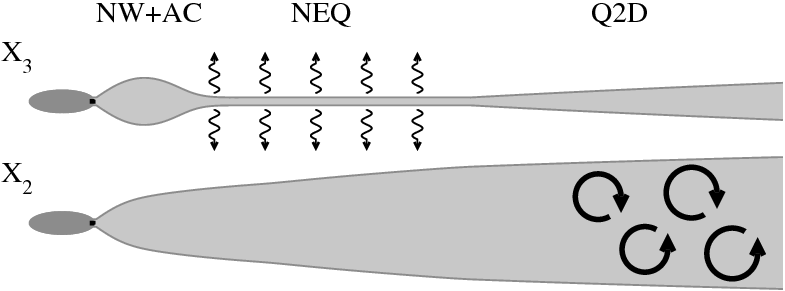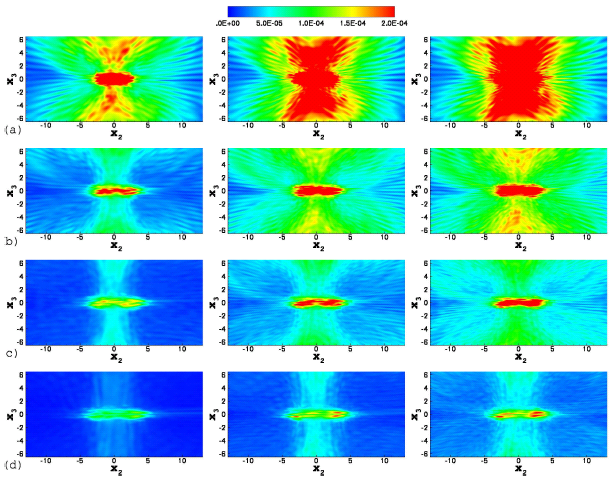

While the turbulent wake behing a moving body is a fundamental problem in turbulence and has been studied for hundreds of years, even the wake behind
relatively simple shapes such as spheres still lacks a complete description. The reason for this is that the wake is highy nonlinear which makes it
difficult to study analytically. The presence of a density gradient significantly complicates matters as it destroys the symmetry of the problem
and introduces a complex coupling between kinetic and potential energy.
For studying the wake behind a bluff body there are two configurations that are commonly used: a towed body and a self-propelled body. The wake profiles
for the two configurations are qualitatively different. The wake of a towed body consists solely of a drag lobe whereas the wake of a self-propelled body
consists of both a drag lobel and a thrust lobe. For a self-propelled body moving at constant speed, the drag and thrust balance which produces a wake
with zero net momentum. If a self-propelled body is accelerating then it will have a wake with excess momentum.
The presence of a density gradient disrupts the balance of momentum in the wake of a self-propelled body moving at constant speed
by inhibiting motion in the vertical direction
and allowing the presence of internal gravity waves which carry energy away from the wake to the surroundings.
All stratified turbulent wakes follow a qualitatively similar evolution. First there is a near wake region where the wake evolves as thought it was
unstratified. The next region is termed the Non-Equilibrium regime where the wake feels the effect of buoyancy. During this time the wake slowly collapses
in the vertical direction and expands in the horizontal direction. The collapse generates internal gravity waves which propagate energy from the wake to
the background. At late time, the Q2D regime, the flow is quasi-horizontal and decays until the wake relaminarizes. Large pancake eddies form in the
Q2D regime.
Our research efforts have focused on the effect of the Prandtl number on a stratified turbulent wake and the effect of excess momentum on a self-propelled wake in a stratified fluid. Further details on both of these projects are available upon request.
Simulations of a self-propelled wake with excess momentum in a stratified fluid |
The effect of the Prandtl number on a stratified turbulent wake |
 |
 |